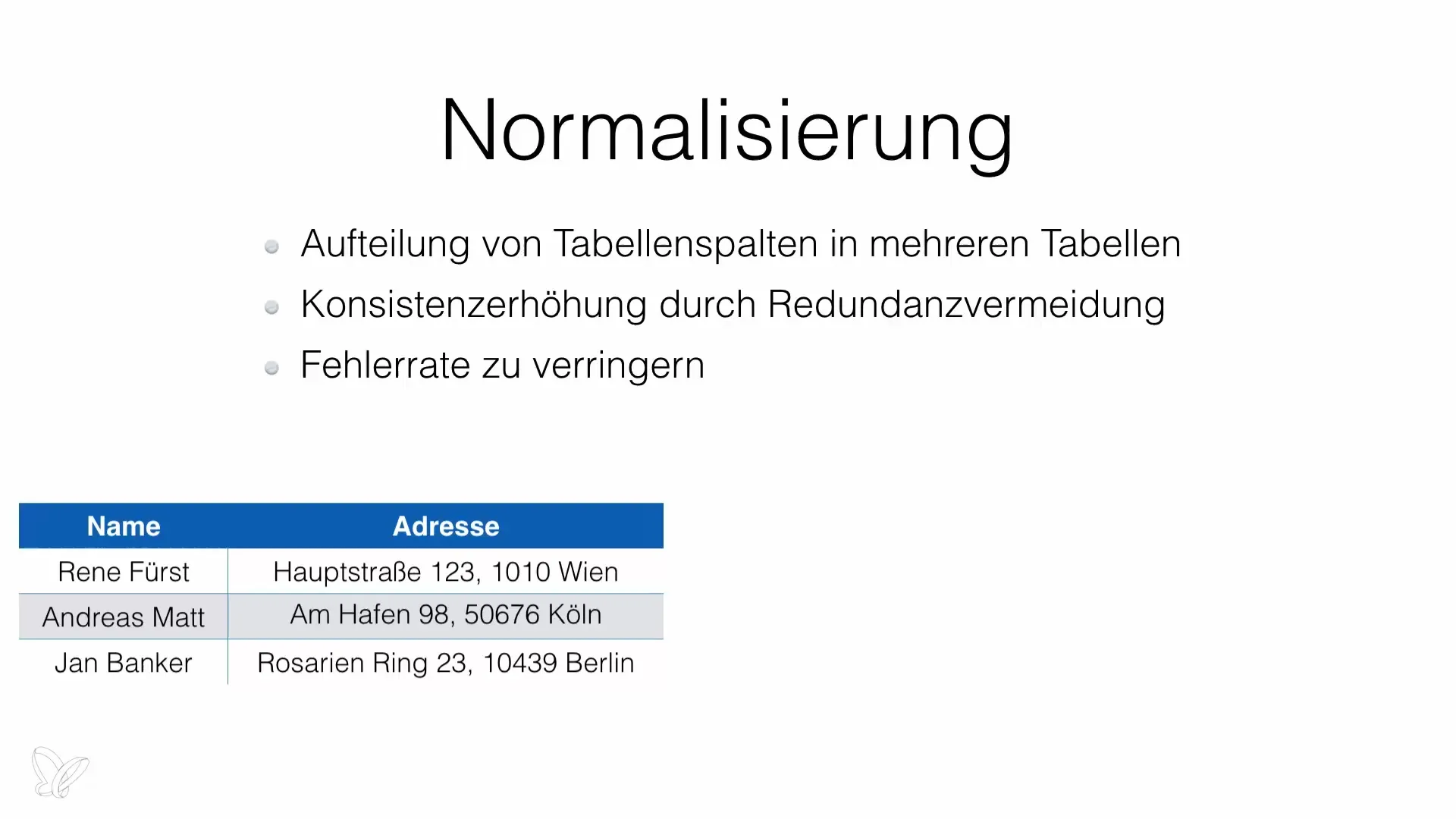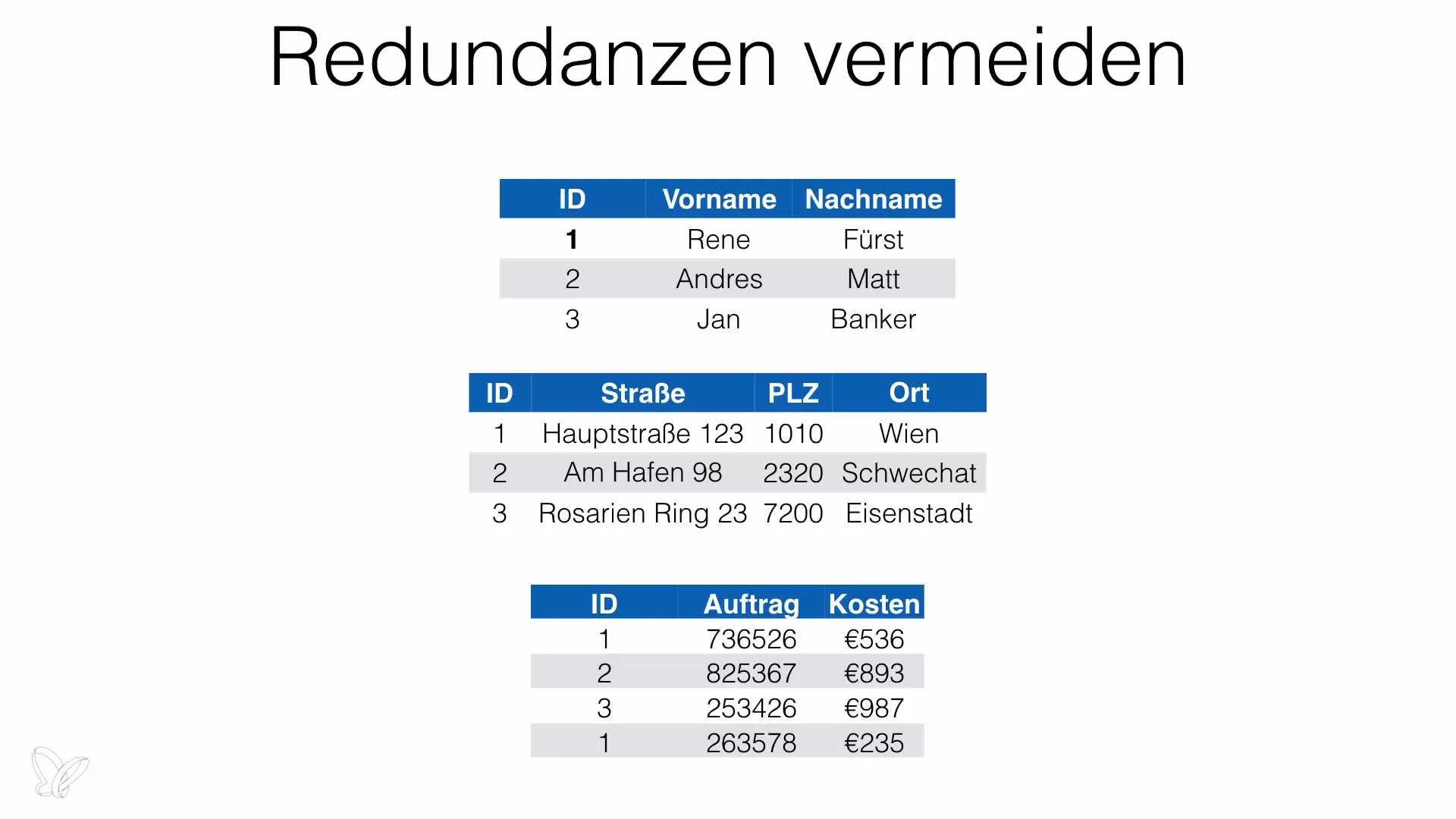The challenge of working with databases often lies in the correct design of the data structure. A well-thought-out database design not only improves efficiency when working with data but also leads to fewer problems in data storage and processing. Normalization is a key method to ensure that your databases are clean and error-free in structure. In this guide, I will introduce you to the three important normal forms and explain how you can effectively optimize your Access database.
Key Insights
- Normalization is crucial for the structuring of databases.
- There are a total of five normal forms, of which the first three are usually the most relevant.
- By applying these normal forms, you can avoid redundancies and improve data integrity.
Step-by-Step Guide to Normalization
First Normal Form
The first normal form (1NF) requires that all data is organized in a table and that each set of data is identified by a unique primary key. The goal is to avoid redundancy and ensure that the data does not occur multiple times.
Here’s an example for clarification: Suppose you have a table with names and addresses. Instead of storing the data in a single row, you separate it. Each record contains only relevant information, and access to individual data is simplified.

Thus, the record for a person would be structured as follows: First name, last name, street, postal code, and city. This allows you to easily filter the data and make queries more efficient, such as finding all customers from a particular city.

Second Normal Form
The second normal form (2NF) extends the concept of the first normal form by requiring that all non-key attributes are fully dependent on the key. The goal is to move repeating data into separate tables.
Let’s take the example of a table with customer data and their orders again. If a customer has multiple orders, the second normal form would suggest storing the customer data in one table and the order data in another table.
You would then assign a unique ID to the customer table to link it to the order table via the primary key (foreign key). This reduces the redundant storage of customer data and improves clarity.

Third Normal Form
The third normal form (3NF) goes a step further and requires that no attributes should be dependent on other non-key attributes. The aim is to eliminate unnecessary data connections and avoid anomalies.
To illustrate this: Imagine a table that records both order data and invoice data. Instead of storing everything in one table, you assign a unique ID to the order data and store the invoice data in a separate table.
This not only simplifies data management but also allows for more flexible handling when, for example, additional invoice information is needed.
To further avoid redundancies, you can separate postal codes from locations so that the name of each location only needs to be stored once and can be accessed through the postal code.

Summary - On the Way to an Optimal Database: How to Normalize Your Access Database
Effective database design through normalization is essential to avoid redundancies and ensure data integrity in an Access database. The first three normal forms provide fundamental steps for optimization and help to increase clarity and minimize error rates. By understanding and applying the principles of these normal forms, you will be able to create more effective and efficient databases.
Frequently Asked Questions
What is normalization?Normalization refers to the process of efficiently organizing data in a database to avoid redundancies and improve structure.
How many normal forms are there?There are a total of five normal forms, but usually, the first three are sufficient for most applications.
How does the first normal form work?The first normal form ensures that all data in a table can be uniquely identified and that no repeating groups are present.
Why is the second normal form important?The second normal form reduces redundancies by ensuring that all attributes are fully dependent on the primary key.
What is eliminated in the third normal form?In the third normal form, attributes that are not dependent on the primary key are removed to avoid data collisions and anomalies.


